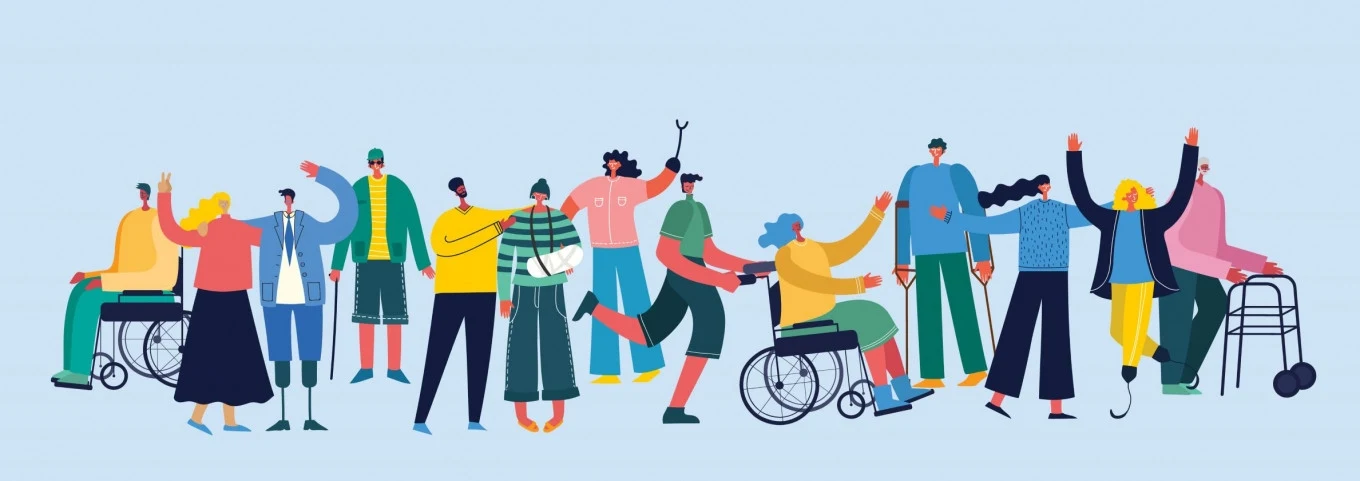Introduction
Health equity, a cornerstone of public health, is a principle that dictates that everyone should have the opportunity to attain their highest level of health. Unfortunately, persons with disabilities often face unique challenges in accessing healthcare, leading to disparities in health outcomes. This article delves into the importance of health equity for persons with disabilities and explores strategies to bridge the existing gap.
Health equity, a cornerstone of public health, is a principle that dictates that everyone should have the opportunity to attain their highest level of health. Unfortunately, persons with disabilities often face unique challenges in accessing healthcare, leading to disparities in health outcomes. This article delves into the importance of health equity for persons with disabilities and explores strategies to bridge the existing gap.
Understanding Health Disparities
Persons with disabilities constitute a significant portion of the global population, facing a diverse range of physical, sensory, intellectual, and psychiatric impairments. Unfortunately, they encounter numerous barriers in accessing quality healthcare, perpetuating health disparities. These barriers may include physical inaccessibility, lack of accommodations, societal stigma, and inadequate healthcare provider training.
The Impact of Health Disparities
Health disparities among persons with disabilities can result in poorer health outcomes, reduced quality of life, and increased healthcare costs. Limited access to preventive care, rehabilitation services, and mental health support exacerbates existing health conditions and leads to a cycle of health-related challenges. Moreover, the social determinants of health, such as education, employment, and housing, are often intertwined with disability, further deepening health inequities.
Strategies for Achieving Health Equity
1. Accessible Healthcare Facilities:
- Implement universal design principles to ensure physical accessibility of healthcare facilities.
- Provide assistive technologies and communication aids to enhance patient-provider interactions.
- Advocate for policies that promote the inclusion of persons with disabilities in all aspects of healthcare planning and delivery.
- Ensure that health information and communication materials are accessible to individuals with diverse abilities.
- Develop training programs for healthcare providers to increase awareness and understanding of the specific needs of persons with disabilities.
- Promote disability competency in medical and nursing school curricula to cultivate a more inclusive healthcare workforce.
- Foster partnerships between healthcare organizations and disability advocacy groups to address the unique challenges faced by persons with disabilities.
- Involve persons with disabilities in the design and evaluation of healthcare services to ensure their perspectives are considered.
- Leverage technology to enhance healthcare accessibility, such as telehealth services, mobile applications, and digital health records designed with accessibility features.
- Encourage the development of assistive technologies that empower persons with disabilities to manage their health independently.
Achieving health equity for persons with disabilities is not only a moral imperative but also a fundamental public health goal. By addressing the barriers that impede access to healthcare and promoting inclusive policies, we can work towards a more equitable healthcare system. It is crucial for governments, healthcare providers, advocacy groups, and society at large to collaborate in dismantling these barriers and ensuring that all individuals, regardless of ability, can enjoy the right to optimal health and well-being. Only through such collective efforts can we build a society where health equity is a reality for everyone, including those with disabilities.
Bibliography:
- Global report on health equity for persons with disabilities. (2022, December 2). https://www.who.int/teams/noncommunicable-diseases/sensory-functions-disability-and-rehabilitation/global-report-on-health-equity-for-persons-with-disabilities
- The unsteady path – Towards meaningful participation of Organisations of Persons with Disabilities in the implementation of the CRPD and SDGs. A pilot study by Bridging the Gap – IDDC. (n.d.). https://www.iddcconsortium.net/blog/librairie/the-unsteady-path-towards-meaningful-participation-of-organisations-of-persons-with-disabilities-in-the-implementation-of-the-crpd-and-sdgs-a-pilot-study-by-bridging-the-gap/


Post a Comment
Full Name :
Adress:
Contact :
Comment: